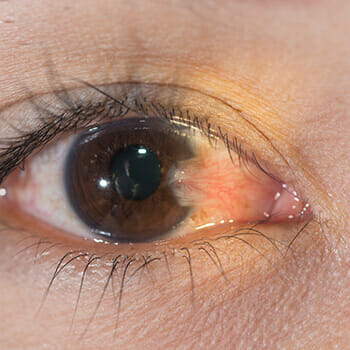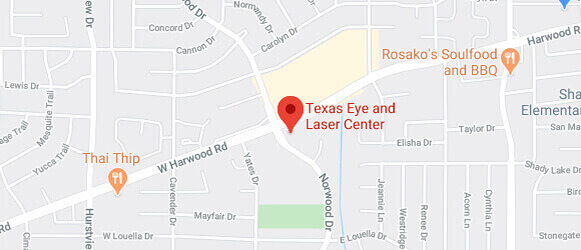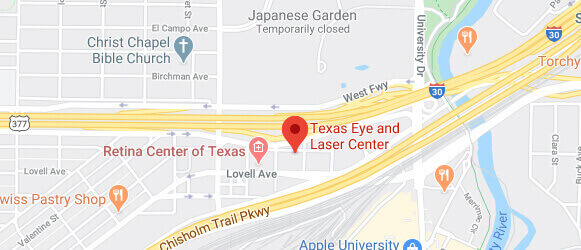 A pterygium is a non-cancerous growth of the conjunctiva that extends from the inner corner of the eye to the center of the eye. One or both eyes may be involved. A pterygium can vary in appearance. It can range from a small tissue mass to large, red, very noticeable growth. Because a pterygium varies in appearance, it may be one of many different colors. It can also appear vascular or avascular.
A pterygium is a non-cancerous growth of the conjunctiva that extends from the inner corner of the eye to the center of the eye. One or both eyes may be involved. A pterygium can vary in appearance. It can range from a small tissue mass to large, red, very noticeable growth. Because a pterygium varies in appearance, it may be one of many different colors. It can also appear vascular or avascular.
Pterygium is more common in people with frequent or prolonged outdoor exposure to sunlight, wind, dust, and dryness. Farmers, fishermen, and people living near the equator are often affected. Pterygium is rare in children.
Symptoms of Pterygium
- Redness
- Irritation
- Inflammation
- Decreased vision
- Foreign body sensation
Treatment for Pterygium
When a pterygium becomes red and irritated, topical eye drops or ointments may be used to help reduce the inflammation. If the pterygium is large enough to threaten sight, if it is growing, or if it is just unsightly, it can be removed surgically. No-stitch surgery is possible thanks to a modern tissue adhesive.
Fibrin tissue adhesive allows the surgeon to secure an autograft in a short amount of time. Once the abnormal tissue is removed, a thin graft of normal tissue is used to replace the damaged area. A pterygium can return after it has been removed, but the recurrence rates using advanced surgical techniques that use both fibrin tissue adhesive and amniotic membrane transplantation are as low as 1%.
Preventing a Pterygium
If you spend a lot of time outside, then you’re exposed to many of the risk factors. However, simply protecting the eyes from ultraviolet light and keeping the eyes moisturized with over-the-counter preservative-free eye lubricating drops may help prevent this condition.
Pterygium FAQs
Is pterygium surgery covered by medical insurance?
Pterygium treatment is not always covered by insurance. However, in instances where the patient’s pterygium is interfering with vision, it may be considered a medical necessity, and therefore covered. To learn more, schedule a consultation at Texas Eye & Laser Center. They will help you discuss your case with your healthcare provider.
Can pterygium be cancer?
While pterygium can interfere with your vision, the vascular pink tissue it is comprised of is a type of benign tumor. This means that while the pterygium can be annoying, it will not invade the eye, sinuses, or brain.
Can pterygium grow back once it has been removed?
Yes, pterygium can grow back after it has been treated. About one in 10 patients may experience a recurring pterygium. The ophthalmologists and Texas Eye & Laser will use the most effective treatments to discourage the tumor from growing back.
How long does it take to recover from pterygium surgery?
The recovery from pterygium surgery will vary depending on the size and severity of the pterygium. Typically, patients’ eyes are fully recovered within 6 weeks.
If you feel you have symptoms like those listed above, then schedule an appointment with us at Texas Eye and Laser Center.



